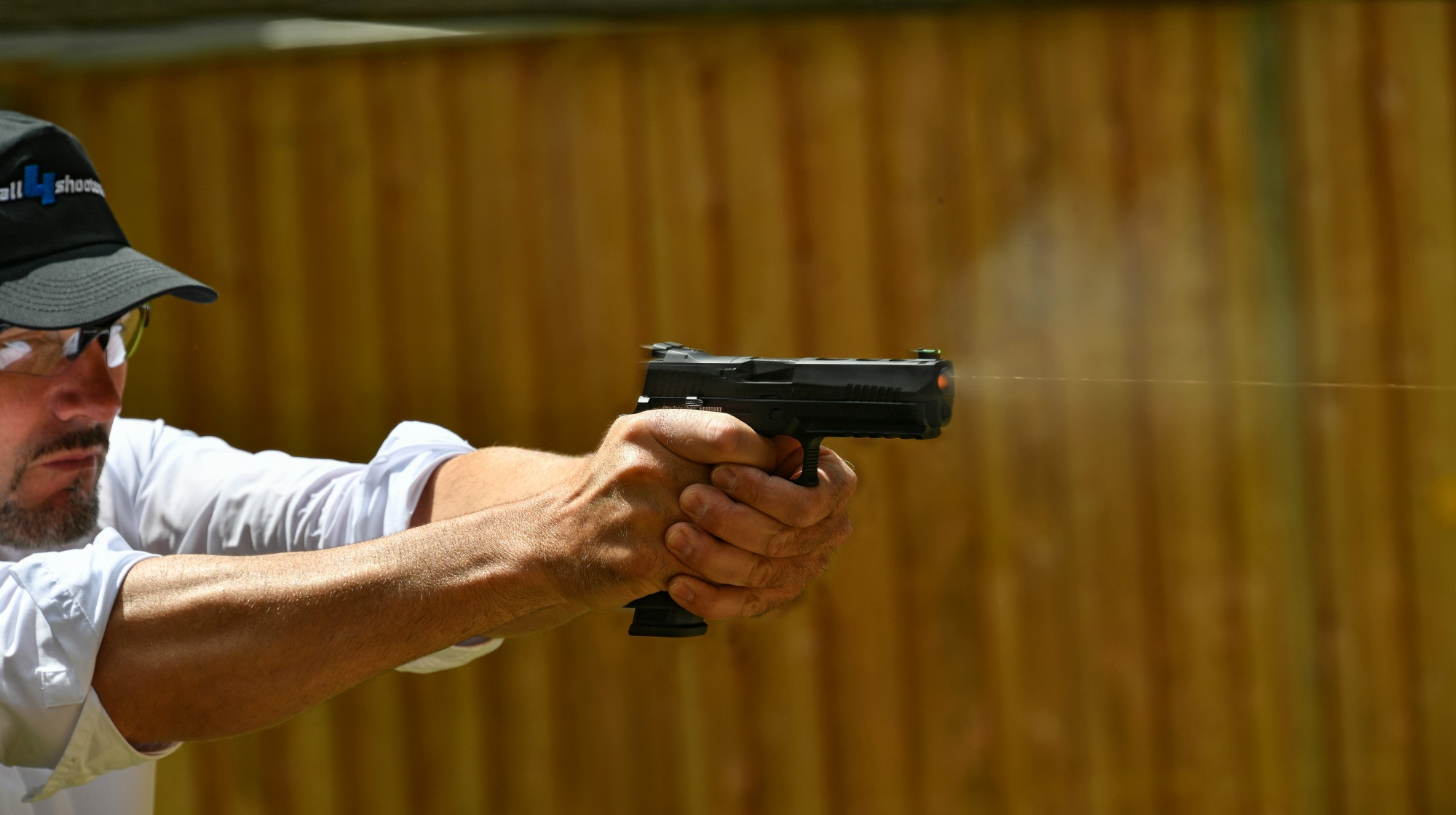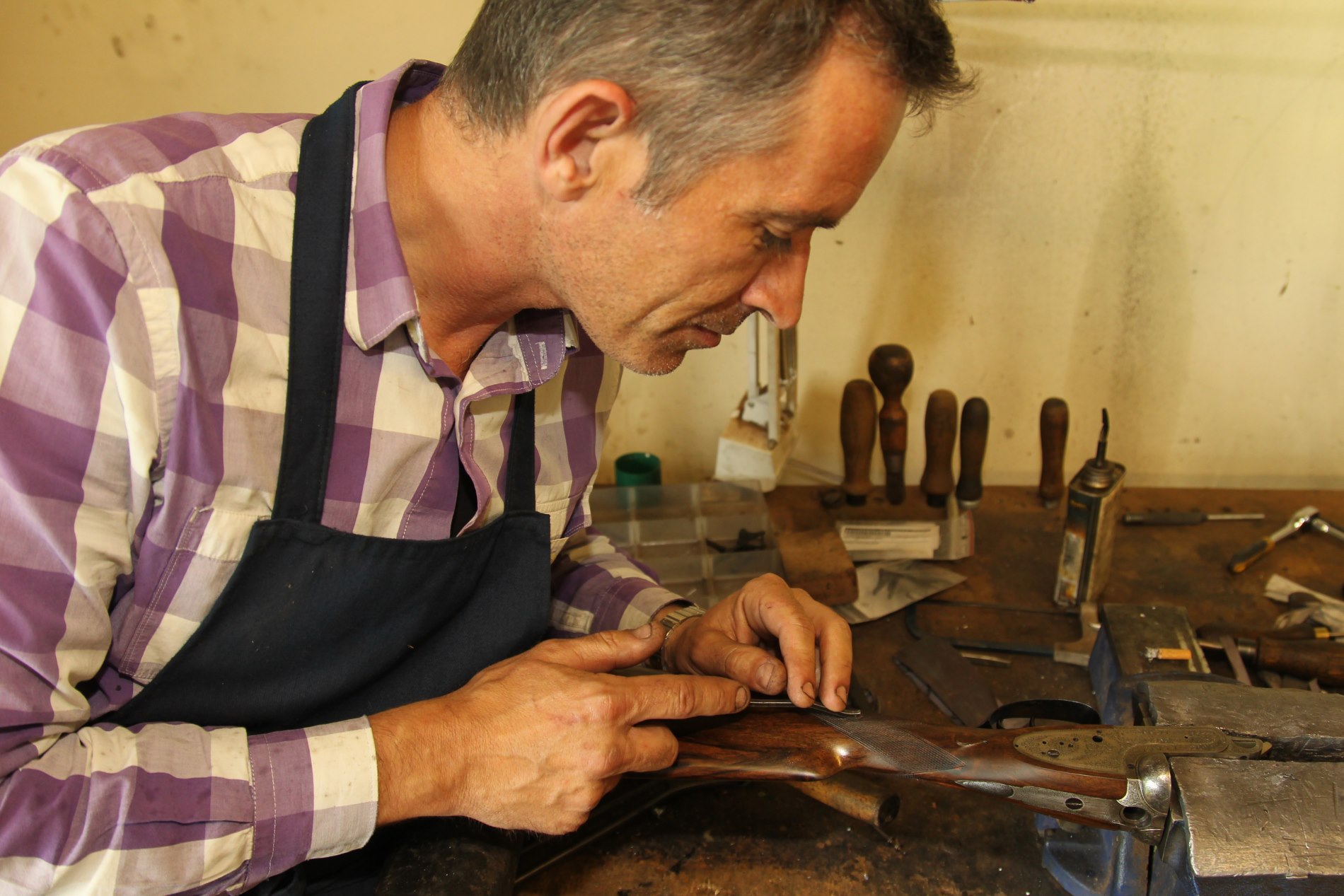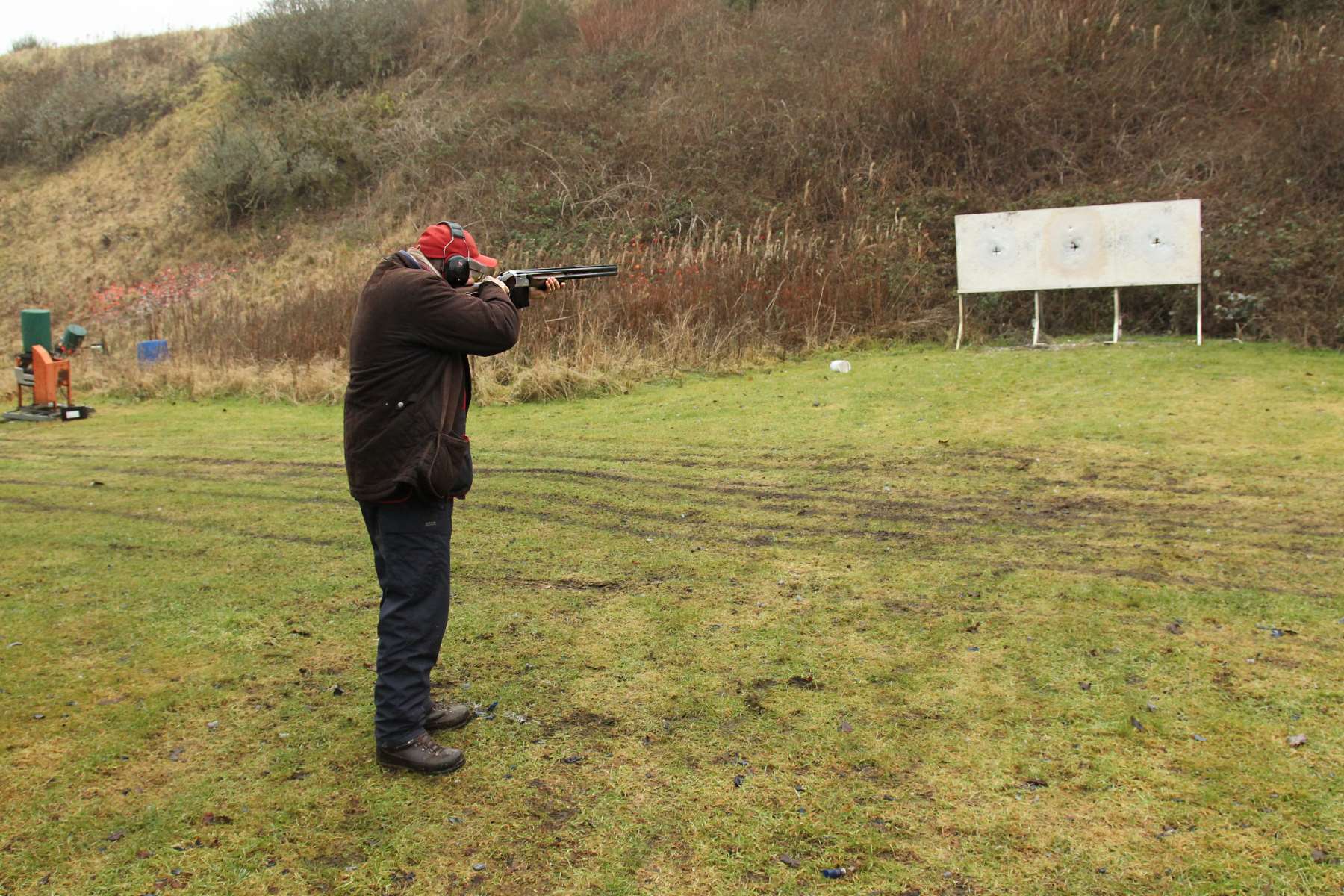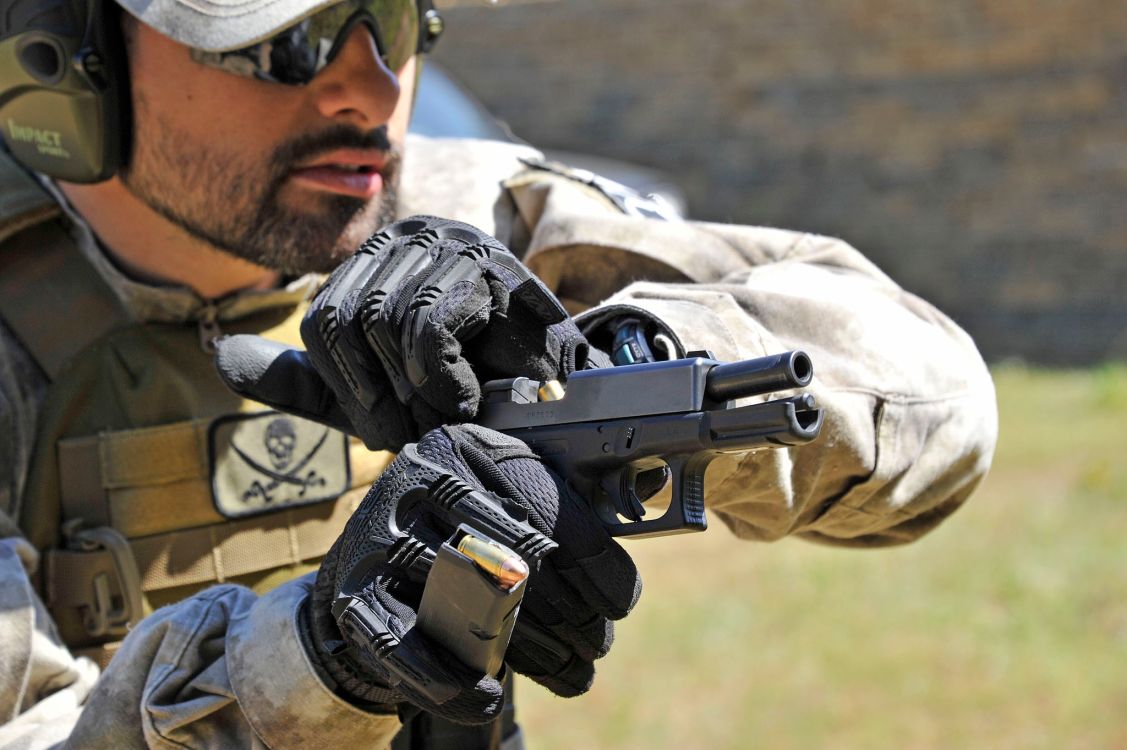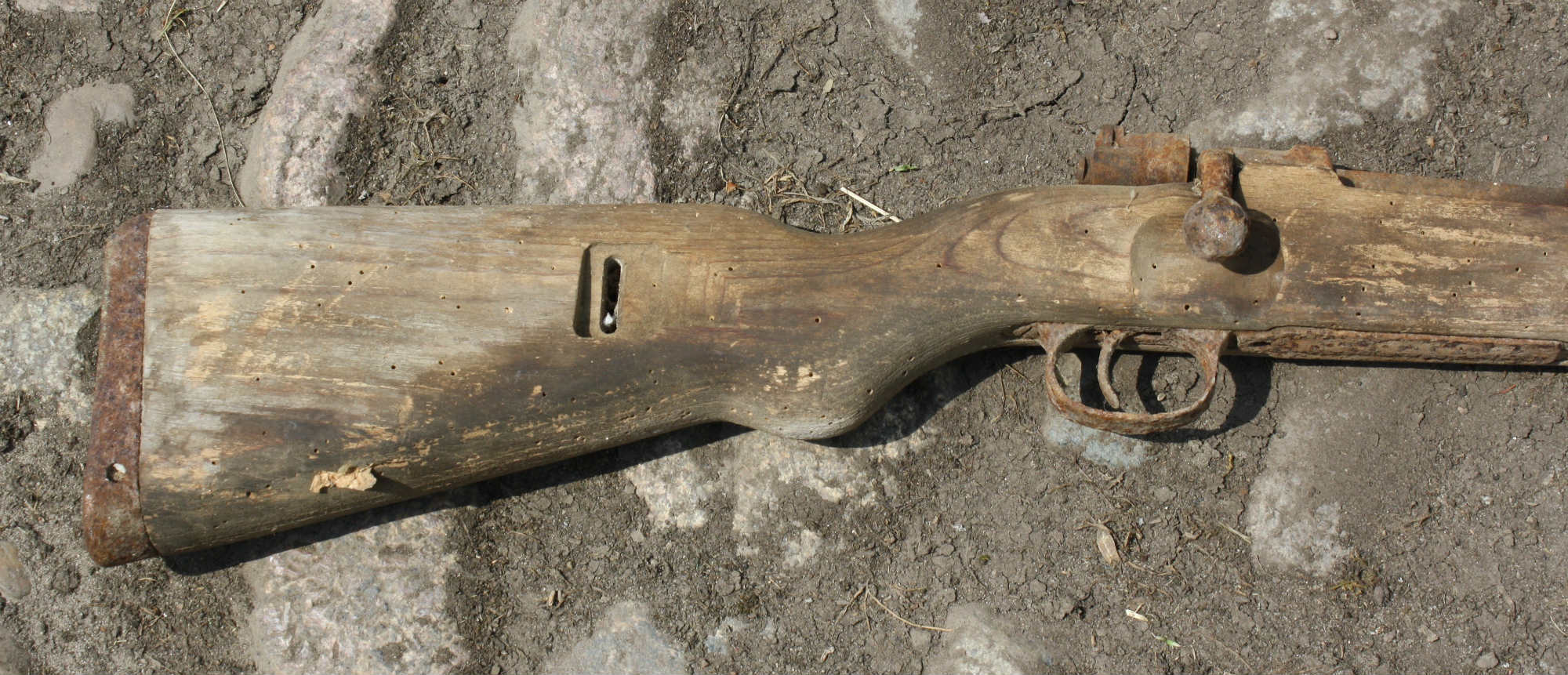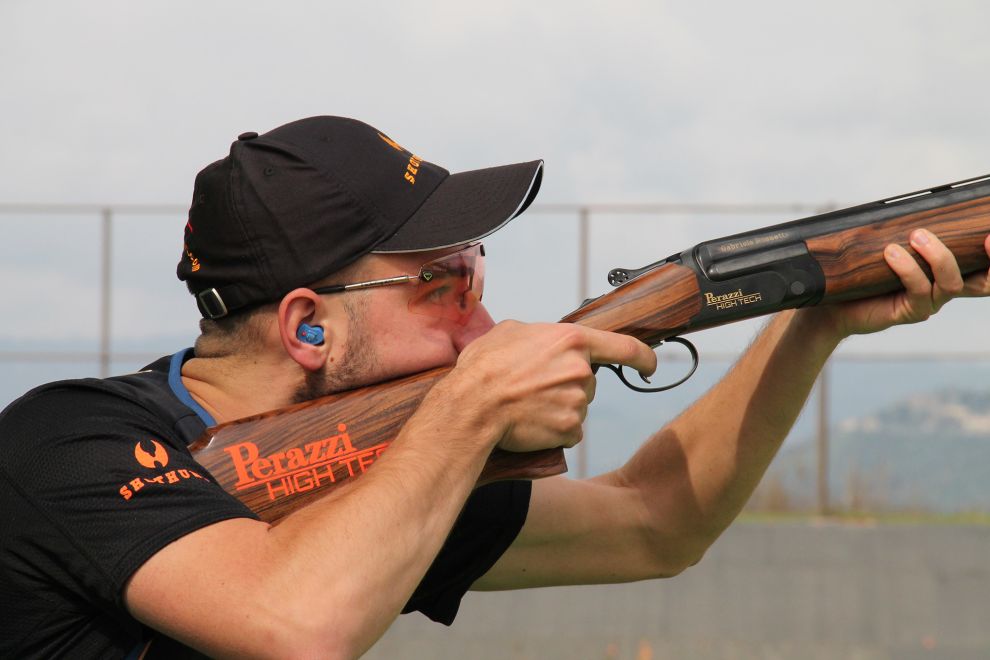When to clean a gun?
This may seem an idle question, for the obvious answer is “whenever you use it”, but there's another question that underlies the obvious one: “is it enough?” To make a long story short, the answer is: “No”.
Every time we handle a gun, we leave fingerprints that contain acidic skin oils, maybe sweat, and we wipe away the protective gun oil coat we placed on the gun when we last cleaned it. Even if the gun is left in a safe, oil evaporates (though at a much slower rate than water) or collects in the lower parts of a manufact, leaving the higher portions exposed.
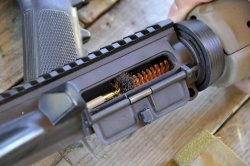
So it is good policy to take guns out of the safe every now and then to inspect them and give them a swift clean.
You should closely check for any rust traces or spots (a led flashlight comes very handy as rust stands out boldly against the blued surface under led light) and for any dents or cracks in the wood.
We will assume that the gun passes visual inspection without problems, as each specific issue requires its own specific action that goes beyond the scope of this article. Now that we know that everything is ok, we can proceed with routine maintenance cleaning.
Accessories for cleaning and care of firearms
Just get a clean patch, put 2-3 drops of oil on it and pass it a couple of times down the bore.
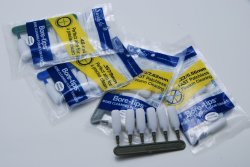
Wipe the surface of the gun with a clean rag or kitchen paper, then renew the protective oil film using a soft brush: it will reach crevices where a wipe down rag wont get.
Just put a few drops of oil on the brush (less for a pistol, a little more for a rifle), and brush it down thoroughly.
If you use always the same brush, you won't even need to oil it every time: the oil left on the brush is enough for a few guns.
Leave it in the locker or safe, so that any time you handle one of your weapons you can then give it a quick brushdown to insure the protective layer is ok.
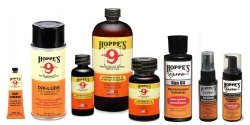
Remember that you must put only enough oil to leave a thin oily film on the metal: it should be almost invisible, and the surface should feel just a little greasy to the touch, not wet.
A dripping gun that looks like salad with too much dressing will attract dirt, which in turn will wick the oil away from the metal, leaving it exposed to the elements.
For polished wood stocks and grips finished with an oil or lacquer coat, you can use beeswax based products or microcistalline wax: again, apply with a soft brush and then wipe dry with a clean towel.
For bare wood, such as in most old service guns, boiled linseed oil is the best choice.
Otis O-12 GP “General Purpose cleaner”: oil to clean a gun
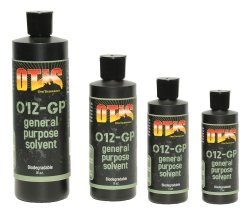
If you just handled the gun, a quick brushdown will take just a few seconds.
If it's the routine maintenance cleaning, bore swabbing, gun wiping, brushing and wood waxing, it should take no more than a couple of minutes per gun.
How often this should be done depends upon the protective measures you adopt. Usually long lasting protection measures contrast with the need of having a gun readily available, as they need to be removed before the gun can be used, so we will leave long storage measures to another article, and get on with normal storage, where a gun that has to be readily available will receive only a modicum of protection, compatible with its purpose.
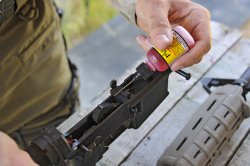
Say we shoot the gun, clean it and put it away until next time, which may be any time between next week and a few months.
Several variables will influence how much time can pass between two routine cleaning procedures during this period. Weather and local climate are probably the most important factors: if you live in a dry, hot climate, the gun can be left alone almost for as long as if you had taken long term storage precautions (but oil will evaporate more readily).
Taking the gun out once a month to inspect it for any rust problems is good practice anyway.
Cleaning kit to clean a gun
On a normal, mild climate, with average humidity, a monthly cleaning routine is perhaps a little over-cautious, but it is safe and, after all, it will take very little time. Very humid weather, or living near the sea, will be more demanding and you'll have to perform more frequent inspections, maybe even once a forthnight.
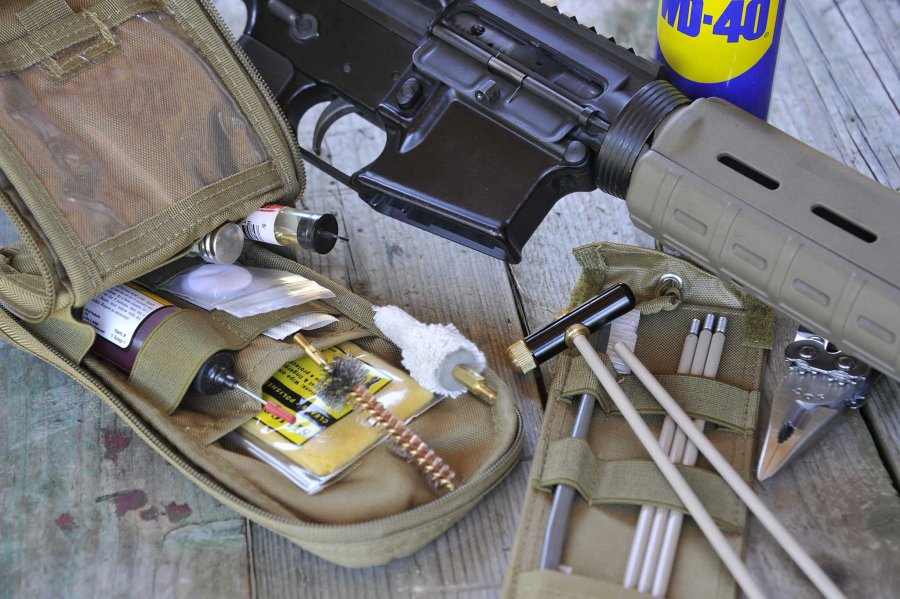
The storage container is also a factor.
Counterintuitively, a tightly closed container, like a safe, is not as good as one with more ventilation, as humidity can penetrate, accumulate and damage the guns, especially if the inside is subject to considerable thermal variations which can make humidity condense on the cold metal surface of a gun.
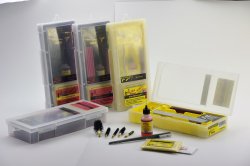
Usually drying salts are a good idea in such cases, but we must renew them periodically. Silica gel is quite useless, though, as it's meant to remove small amounts of humidity from sealed packaging.
For the same reason, transferring a gun from a cold room into a warm one just after cleaning is not a good idea: again counterintuitively, warm air has a higher capacity to hold moisture than cold air (this is why when you breathe in cold weather you see water vapour clouds out of your mouth and nose), and this humidity will immediately start to condense on the colder metal surface.
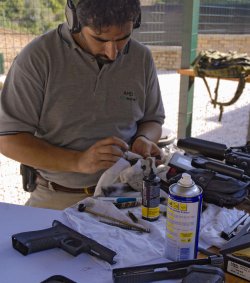
If you put the gun in a safe, it will carry along that humidity inside.
When the gun will reach room temperature, that humidity will evaporate again, remaining inside the safe and affecting all the guns stored there...
Better practice is to bring the gun in a warm room, let it get at room temperature, then clean it and store it.
A once-a-month inspection may seem a far too cautious routine.
After all, we just said that in most circumstances a gun can remain months into storage without adverse effect, but consider a few points.
First, precautions mean exactly that: pre - cautions. Being cautious after the damage is done is pretty pointless.
Second, once corroded, steel doesn't grow back. So, it's to better devote a few minutes of maintenance to our stored guns than have to discover rust spots or, God forbids, pitting.
Third, by the time rust is visible to the unaided eye in natural light, there's already a load of it on the metal. Modern technology comes to our rescue: as we said led light is great for spotting rust.
Fenix E15 super compact flashlight to inspect the gun
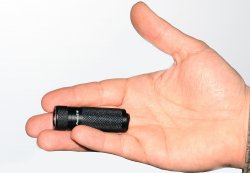
Just use your led flashlight in a dim room to inspect a gun. The least trace of rust will stand out in all its reddish-brown horror against the blued surface. Seeing is believing. You'd be amazed at how many guns you deemed “perfect” are in fact more or less affected by rust spots or a light rusty patina here and there.
If you catch a small, lightly rusty spot at this stage, little or no harm is done.
Leave the rust fester on the surfaces for some months, and you could severely damage the value of a collectible, or have an ordinary gun with a discoloured spot which will nag at you nonetheless every time you see it and think about how easily you could have prevented it.
An adequate maintenance routine at cautious intervals, which will take just a couple of minutes a piece, is all you need to sleep comfortably in your certainty that your guns are properly protected against environmental agents.



